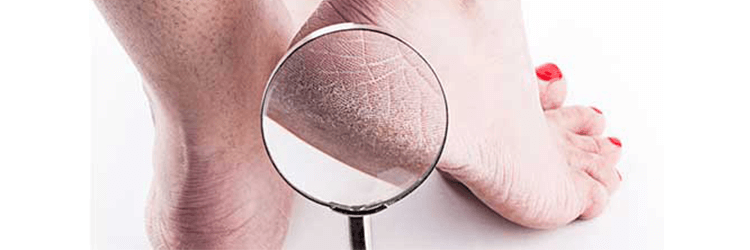Cracked heels, also known as heel fissures, are a result of dryness and dead skin build up. Rough, cracked heels are not only unsightly but can be quite painful. In severe cases, cracked heels can become infected and can also lead to a bacterial infection known as cellulitis.

Dry weather

Improper foot care

Central heating

Walking barefoot

Nutritional deficiency

Excessive hot showers
Symptoms

Roughness

Redness of skin

Flaky or peeling skin

Cracks in the feet

Itchiness around heels

Painful to touch
Treatment Options
- Epsom salt-soak promotes circulation and cleanses bacteria off the skin besides adding moisture.
- Heel repair balm containing descaling (keratolytic) or water-retaining (humectant) agents such as salicylic acid, alpha-hydroxy acids, urea and saccharide isomerate can help.
- For cases where no improvement is seen after a week of self-treatment, seek a podiatrist’s advice.
- Debridement – cutting away hard thick skin – is one of the treatment procedures for severe cases.
For healthy, best-looking feet
- Avoid beauty products with alcohol, fragrance, retinoids, or alpha-hydroxy acid (AHA).
- Put on a moisturizer before hitting the sack, slip on cotton socks, and wear them overnight.
- Limit your shower to 10 minutes and use warm water instead of hot.
- Avoid direct exposure to sunlight.
- Eat a diet rich in calcium, iron, zinc, and omega-3 fats.
- Maintain good foot hygiene.














